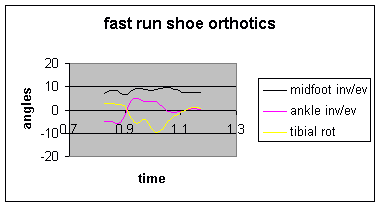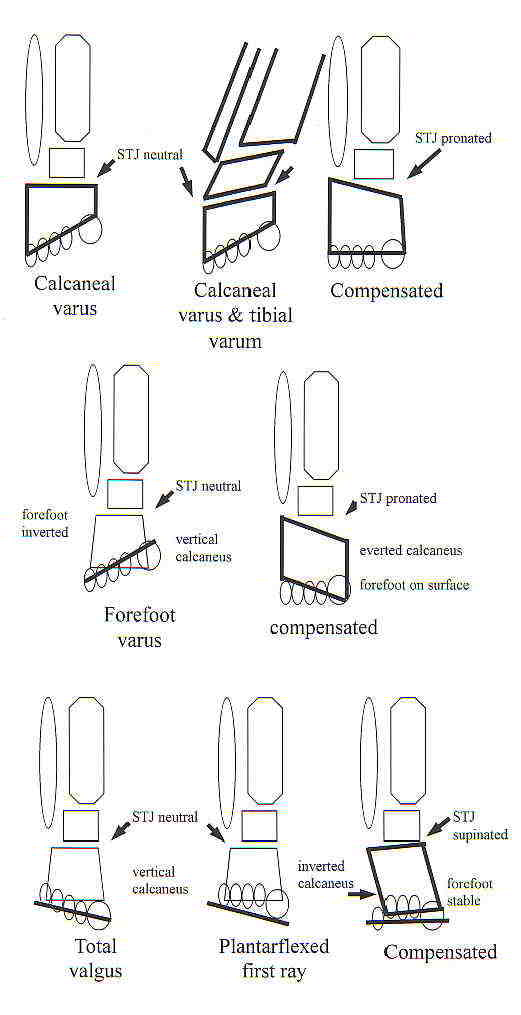Orthotics
Orthotics can either be “off-the-shelf” standard items that are ready made and adjusted for the patient’s particular size - or custom-made, particularly in cases of more complex injuries or changes to multiple joint structures.

Reasons to use orthotics
There are a few reasons that your physiotherapist might recommend the use of orthotics. Generally speaking, orthotics are designed to either stabilise a body part, or assist that body part in movement. For example, if a joint is not in a functional position, then orthotics may be used to help it to function better, recover and to prevent further injury during the recovery process.
Types of orthotics
There are several types of orthotics. Commonly, they can be divided into soft and hard. Both can be molded, but it is more common to mold the hard ones. Both can have inserts, wedges, domes, etc, glued to them. Some are moulded after taking a cast of the foot whereas others are designed after foot platform analysis of weight distribution across the sole of the foot. Commonly, a video is also taken of the rear of the foot at push off. Try soft orthotics first. Inexpensive and frequently enough to fix the problem.
Some conditions that might require orthotics include:
- Back pain - if this is caused by foot or leg problems that are causing uneven gait, then orthotics might help you to walk more evenly and reduce the pressure on your back
- Arthritis - orthotics can help with positioning of the joints to relieve discomfort
- Bursitis - when the fluid-filled sacs in the heels and toes become inflamed, they cause a great deal of discomfort which orthotics can help to reduce
- Ankle sprain – an orthotic might provide support to prevent further injury while you recover and to allow you greater movement
- Achilles tendonosis - take tension off the achiilles tendon esp at the insertion of the heel and it's bursa
- Inside knee pain - reduces the amount of rotation on the inside of the knee as the first joint of the foot is a 'ball and socket' joint.
- Outside hip pain and bursistis - again aids in control of rotation
Common mistakes with orthotics
Orthotics can be incredibly valuable tools in your recovery, but only if they’re used correctly. There are a few key mistakes that people regularly make, so we want to help you avoid them!
● You need to wear them in gradually
It will probably take two to three weeks to get completely used to wearing your orthotics and, except in serious cases or unless your physiotherapist tells you differently, you will need to gradually build up the amount of time you wear them each day rather than wearing them full-time from the offset.
● You must follow your physiotherapist’s instructions
We know it can be a hassle to have to put that wrist support on every time you play sport, but it really is important. You need to wear the orthotics in the right way, at the right time, for the right amount of time, or they may not work as effectively as they could. Your physiotherapist has given you those instructions for a reason, so it would be advised to follow them as best as possible.
● Don’t give up on them as soon as you’re feeling better
Because it can be a hassle to keep putting them on, or because people don’t think they look particularly attractive, or because they might not be incredibly comfortable, many people are keen to ditch their orthotics as soon as possible. But just because the pain has subsided doesn’t mean the problem’s gone away. If you give up on them too soon, the problem might come back or get worse. So don’t put them away until your physiotherapist gives you the go-ahead.
When you’re experiencing pain, we’re happy to talk you through all the different treatment options available, including what types of orthotics might work for you alongside our hands-on and movement / exercise-based treatments (but only if needed of course!). Give us a call on or email and we can discuss your choices.
Take a look at my research - barefoot running vs orthotics : EMG and joint angle analysis
read more.........see link below
https://www.back-in-business-physiotherapy.com/orthotics-and-gait.html
Uploaded : 26 August 2021






